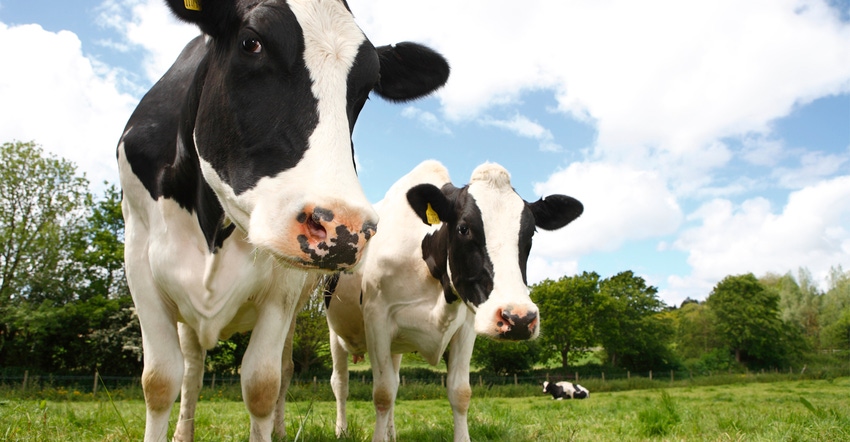
Despite relatively strong milk production growth, dairy product prices continue to show strength, says Bob Cropp, University of Wisconsin-Madison dairy economist.
While prices on the CME moved up and down during April, the price of cheese, dry whey, butter and nonfat dry milk all strengthened. The 40-pound cheddar block price, which was as low as $1.74 per pound, strengthened to $1.80 and at of the end of April was $1.79.
Cheddar barrels were as low as $1.51 per pound, but have risen to $1.80. Barrels had been well below the block price but now have surpassed blocks. Dry whey ranged from 63 to 70 cents per pound and at the end of April was 68 cents per pound. Butter was $1.79 per pound. Nonfat dry milk was $1.24 per pound.
As a result of these stronger dairy product prices, the April Class III price will be near $17.70, compared to $16.15 for March, and the April Class IV price near $15.50 was up from $14.18 for March.
These stronger prices are the result of several factors, Cropp says.
“Food service, which normally accounts for about 50% of cheese and butter sales, has improved as more restaurants have more fully opened and some schools have returned to partial or full in-classroom instruction,” he explains.
Dairy products have been purchased under the Farms to Families Food Box Program, which was set to end on April 30 but has been extended to the end of May. There have also been dairy product purchases for the Supplemental Nutrition Assistance Program, formerly known as food stamps.
Increased exports
Dairy exports continue to increase as dairy product prices are competitive on the world market. Adjusting for 2020’s leap year, the volume of February exports on a milk solids equivalent basis was 17.2% higher than a year ago. Exports to China were up 159%. Other rising exports include:
cheese up 1.1%
whey product up 33.9%
butterfat up 120.4%
nonfat dry milk and skim milk powder up 36.1%
USDA estimates milk production for the month was 1.8% higher than a year ago. Milk cow numbers continue to increase with 77,000 more cows than a year ago for an increase of 0.8%. The increase in milk per cow slowed some with an increase of 1%.
Higher milk prices
The level of milk production for the remainder of the year is crucial to how milk prices will fare. USDA is forecasting a relatively strong increase in milk production for the year, at 2.3% higher than last year, Leap Year adjusted. Milk cow numbers are forecasted to average 72,000 head higher or 0.8% and milk per cow is expected to be 1.5% higher.
“This amount of milk will be difficult to move through the domestic market and exports and maintain relatively favorable milk prices,” Cropp says. “But milk production could well slow by the second half of the year as higher feed costs could encourage heavier culling of cows and ration adjustments that reduce the increase.”
Continued improvement in the economy, further opening of restaurants, return of fans to sports events, return of conferences and in-person classroom instruction all occurring in the second half of the year would support higher milk prices, Cropp says.
“With some improvement in the world economy, modest increase in milk production around 1% for major dairy exporters like Western Europe, New Zealand and Australia, and U.S. dairy product prices competitive on the world market should all be favorable for dairy exports this year,” he says. “But unless milk production ends up less than what USDA is currently forecasting, there will a lot of pressure on milk prices.”
Stronger milk futures
Class III futures have been somewhat volatile during the month with Class III at times in the $17s and in the $19s. Currently, Class III futures are rather optimistic in the $19s May through September and the higher $18s October through December.
“If these prices are realized for Class III, the average for the year would be close to the $18.16 average last year,” Cropp notes. “One needs to recognize how important dry whey prices are. Strong exports have strengthened dry whey prices from 40 cents per pound a year ago to currently 68 cents per pound. This strength adds about $1.80 to the Class III price.”
Uncertainty continues as to where milk prices will end the year.
“Unless milk production ends up lower than what USDA is currently forecasting, in my opinion $19 Class III futures are too optimistic,” Cropp says. “I could see Class III in the $17s. I hope I am wrong, but time will tell. We will need to keep watching how things develop month to month.”
About the Author(s)
You May Also Like






